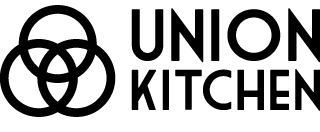Navigating the New Normal: Shifts in Food and CPG Investments
The past few years have seen shifts in food and the CPG investment landscape from large, blockbuster deals to smaller, more targeted transactions. We saw food prices increase dramatically, consumer preferences change, shortages across our grocery stores, and supply chains tighten up.
So where are we today? In this blog, we will take a look at recent investment trends, what consumers want, and the impact more broadly on food and beverage.
Inflation Slows, Consumer Concerns Remain
Despite food prices starting to stabilize, consumers remain concerned about rising costs. More then ever, they are focused on finding value either through the cheapest option or premium products. We see this in decreasing sales for middle-priced items. Consumers want more either through savings or function.

The food inflation rate was 3% in the first quarter of 2024, largely matching with the March US Consumer Price Index of 3.5 percent (1). This is substantially lower than what is regarded as the peak at 11.4% in August - September 2022 (2).
However, a recent survey report by Purdue University’s Center for Food Demand Analysis and Sustainability indicated that consumers continue to predict high food inflation rates. The lead author and Director of the Center, Joseph Balagtas surmised, “Even though food inflation has cooled significantly… inflation remains positive. Consumers, on average, are predicting food price inflation to rise a bit in the coming year.” (3)
This is further supported by the findings in the Catalina report that in several categories, value item pricing not only rose above the overall average but also outpaced the premium alternatives: "While this is positive news overall, it's important to remember the impact isn't felt evenly. Value-conscious shoppers are still grappling with significant price increases on essential items, even as the broader inflation rate cools," said Wesley Bean, US Chief Revenue Officer at Catalina (4).
All of this is leading to consumers focusing on the cheapest option or premium products. There is a lack of interest in items that fall somewhere in between.
Nestle CEO Mark Schneider told journalists during a call to discuss Nestle’s first quarter sales: “We’re seeing significant pressure at the lower income consumer level… But don’t forget there’s also the thriving premium (shoppers), where I think there are consumers that are very interested in a continuous stream of premium products.”(5)
The Chief Finance Officer of Danone, Juergen Esser, shared similar thoughts during an interview at a Sales Update: “The low price segment in Danone’s categories is growing fast, but the high price segment is also growing fast - but the middle segment is a bit squeezed… Consumers are hunting for value either via price, or quality and innovation.” (6)
We are seeing this trend reflected in CPG M&A activity that remains relatively steady despite the recessionary indicators in the U.S. economy. As we have highlighted, most of the recent activity has been driven by legacy food companies looking to acquire more premium market share in their existing categories. Mondelez, for instance, has acquired 9 brands since 2018 including Tate’s and Perfect Snacks. Campbell’s recently purchased Sovos brands, the maker of Raos, for $2.7Bn with the CEO Mark Clouse stating, “This important milestone in Campbell’s history adds several market-leading and scaled premium brands to our company.” (7)

Comments